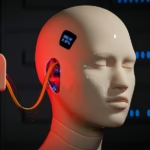Environmental Monitoring: Drones as the New Eyes in the Sky
Introduction
In the face of growing environmental challenges, the importance of effective monitoring and data collection cannot be understated. Traditional methods of data collection for environmental studies often involve human labor, time-consuming processes, and limited geographical reach. However, the emergence of drone technology is revolutionizing the way we approach environmental monitoring. Drones, or Unmanned Aerial Vehicles (UAVs), have become the new eyes in the sky, offering unprecedented opportunities to gather data in real-time, covering vast areas with minimal environmental impact.
The Need for Environmental Monitoring
The effects of climate change, pollution, deforestation, and habitat destruction are increasingly evident worldwide. Effective environmental monitoring is essential for tracking these changes, facilitating conservation efforts, and informing policy decisions. Traditional methods such as ground surveys, satellite imagery, and static observation points often fall short due to their limitations. Drones provide a versatile and efficient tool to enhance the depth and quality of environmental data collection.
Evolution of Drone Technology
The development of drone technology has come a long way since its inception. Originally designed for military applications, drones have evolved into multifunctional tools capable of carrying various sensors. The introduction of consumer-grade drones has further democratized access to aerial monitoring. Equipped with high-resolution cameras, LiDAR, thermal sensors, and multispectral imaging, modern drones can collect an array of environmental data.
Applications of Drones in Environmental Monitoring
1. Forestry and Ecosystem Monitoring
Drones have proven invaluable in forestry management and ecosystem monitoring. They can gather precise data on tree height, canopy cover, and species distribution, which are essential for sustainable forest management. Using LiDAR technology, drones can create detailed 3D maps of forested areas, helping identify changes in biomass and forest health. These maps are crucial for assessing carbon storage and understanding biodiversity within ecosystems.
2. Agriculture
In agriculture, drones are being used for precision farming, which optimizes crop yield while minimizing resource waste. Equipped with multispectral cameras, drones can assess plant health by analyzing light reflectance. Farmers can identify nutrient deficiencies, pests, and diseases early, allowing for timely interventions. This not only increases productivity but also supports sustainable agricultural practices.
3. Water Quality Monitoring
Drones equipped with sensors can facilitate water quality monitoring in rivers, lakes, and oceans. They can collect data on parameters such as temperature, pH, turbidity, and dissolved oxygen. This real-time data is crucial for detecting pollution sources and assessing the ecological health of aquatic systems. Moreover, drones can access remote or hazardous locations that are difficult for human monitors to reach.
4. Wildlife Conservation
Wildlife conservation and management greatly benefit from drone technology. Drones equipped with thermal imaging cameras can track animal movements, monitor populations, and even identify poaching activities. For instance, conservationists can use drones to count elephants in a region or survey rare bird habitats without disturbing the animals. This non-invasive observation is vital for preserving wildlife and their habitats.
5. Disaster Management
Drones play a critical role in disaster management and assessment. After natural disasters such as floods, hurricanes, or wildfires, drones can quickly survey affected areas to provide real-time information. They can assess damage, identify areas in need of aid, and track changes over time. This rapid assessment helps emergency responders allocate resources effectively and aids in recovery efforts.
6. Urban Planning and Development
In urban settings, drones are increasingly used for environmental monitoring to inform urban planning. They can map and analyze land use patterns, monitor air quality, and assess urban heat islands. This information is crucial for developing sustainable cities and ensuring that urban growth aligns with environmental goals.
Advantages of Using Drones
Cost-Effectiveness
One of the most significant advantages of using drones for environmental monitoring is cost-effectiveness. Drones can collect large volumes of data in a fraction of the time and cost compared to traditional methods. This reduction in time and labor leads to more efficient data collection and analysis.
High-Resolution Data Collection
Drones can capture high-resolution imagery and data, providing granular insights into environmental changes. The ability to fly at varying altitudes and angles allows for detailed analyses that would be difficult to achieve using traditional photography or satellite imagery.
Non-Invasive Monitoring
Drones can gather data without disturbing wildlife or ecosystems, providing a level of non-invasiveness that is crucial for sensitive environments. This ability allows for more accurate assessments of ecological health and behavior without interference.
Accessibility of Remote Areas
Drones can reach remote or inaccessible terrains that are challenging for ground crews, making them invaluable in disaster-stricken areas, mountainous regions, or dense forests. They can quickly gather data in locations where human access is limited.
Challenges in Drone-Based Environmental Monitoring
Regulatory Hurdles
The use of drones is subject to strict regulations in many countries. Compliance with aviation laws, privacy concerns, and restrictions regarding flight altitudes can pose challenges for environmental monitoring efforts. Obtaining the necessary permits and adhering to guidelines can be time-consuming and complex.
Technical Limitations
While drones have made significant progress, technical limitations still exist. Battery life can restrict flight duration, limiting the area that can be covered in a single mission. Additionally, adverse weather conditions may impede drone operations, affecting data quality.
Data Management
The volume of data collected by drones can be overwhelming. Handling, processing, and analyzing this data require sophisticated software and expertise. Efficient data management practices are essential to ensure that valuable insights are derived from drone-collected information.
Public Perception
Public perception and acceptance of drone technology can vary. Concerns about privacy, safety, and noise pollution may lead to resistance against drone usage in certain communities. Engaging with stakeholders and addressing concerns is crucial for successful implementation.
Case Studies: Drones in Action
Case Study 1: The Amazon Rainforest
In Brazil, drones have been used to monitor deforestation in the Amazon rainforest. Researchers deployed drones equipped with multispectral cameras to capture data on forest cover, allowing for the identification of illegal logging activities. The ability to monitor vast areas quickly has facilitated more effective conservation strategies.
Case Study 2: Agricultural Monitoring in Japan
In Japan, drones are transforming agriculture by providing farmers with detailed insights into crop health. By capturing aerial imagery during the growing season, farmers can assess plant stress, optimize irrigation, and enhance pest management. This approach has led to significant increases in crop yield and sustainability.
Case Study 3: Coastal Habitat Restoration
In the United States, drones have been pivotal in coastal habitat restoration projects. Researchers use drones to monitor erosion, assess wetland health, and track changes in coastal ecosystems. This real-time data is essential for making informed decisions about restoration efforts.
The Future of Drone Technology in Environmental Monitoring
As drone technology continues to advance, its application in environmental monitoring is likely to expand further. Emerging technologies, such as artificial intelligence (AI) and machine learning, may enhance data analysis and interpretation, making it easier to identify patterns and trends. Additionally, the integration of drone data with other technologies, such as satellite imagery and ground-based sensors, promises to provide a more comprehensive picture of environmental health.
Citizen Science and Public Engagement
The future also holds opportunities for citizen science initiatives involving drones. Engaging local communities in data collection can foster awareness and stewardship of local environments. Empowering citizens with drone technology can amplify monitoring efforts and contribute to more significant conservation outcomes.
Policy and Governance
For the full potential of drones in environmental monitoring to be realized, supportive policies and regulations are essential. Government agencies should create frameworks that facilitate responsible drone usage while addressing safety, privacy, and environmental concerns. Collaboration between governments, researchers, and industry stakeholders will be vital in shaping the future of drone technology for environmental monitoring.
Conclusion
Drones have emerged as a revolutionary tool in environmental monitoring, providing innovative solutions to some of the most pressing environmental challenges. Their ability to gather high-resolution data, access remote areas, and perform non-invasive monitoring makes them indispensable in a world facing rapid ecological changes. As technology continues to advance, drones will play an increasingly vital role in preserving the planet’s health and ensuring a sustainable future.
References
- Anderson, K., & Gaston, K. J. (2013). Lightweight unmanned aerial vehicles will revolutionize spatial ecology. Frontiers in Ecology and the Environment, 11(3), 138-146.
- Chabot, D., & Mooney, T. A. (2017). Drone-based monitoring of aquatic environments: A novel approach to visual survey methods. Marine Biology, 164(11), 246.
- Hardin, P. J., & Ruan, Y. (2017). The use of small unmanned aerial vehicles for mapping and monitoring forest terrain. Forests, 8(8), 312.
- Levandowski, A. A., & Jahre, M. (2017). Drones in environmental monitoring: A review of applications and regulatory framework. Environmental Science & Policy, 75, 1-10.
- Zutter, M., & Gasco, A. (2020). Drones in forest management: opportunities and challenges. Ecological Indicators, 118, 106324.
This article serves as a comprehensive overview of the use of drones in environmental monitoring, providing insights into their applications, advantages, challenges, and future potential. With continuous technological advancements, the role of drones in safeguarding our environment is only set to grow.


























Add Comment